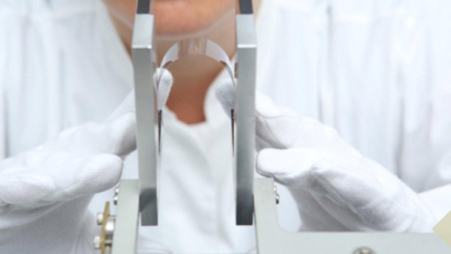Strategic Elements files new patent for its market-leading flexible memory device technology

Strategic Elements files new patent for its market-leading flexible memory device technology (Image: Getty).
Special Report: The patent marks another important step forward in the development of the Nanocube Memory Ink technology.
Research innovation company Strategic Elements (ASX:SOR) continues to build momentum in its development of the Nanocube Memory Ink, a technology that enables memory and data storage to be printed onto glass and flexible plastics.
The company announced this morning that subsidiary Australian Advanced Materials has filed a new patent to obtain additional intellectual property around the technology.
AAM’s patent defines the use-case for its development of ultra-low power nanoscale flexible circuits that can operate transparent printed memory cells.
Developed in conjunction with the University of NSW (UNSW) and the CSIRO, the Nanocube Memory Ink is an advanced data storage technology.
It’s comprised of a transparent liquid ink that contains billions of tiny nanometer scale particles, which can be printed onto glass or plastics to create memory capacity without needing silicon chip technology.
At a technology conference in Berlin last year, IDtechX chief executive Raghu Das said the Nanocube Ink Technology was “genuinely one of the best developments I’ve seen in a while in printed electronics”.
Broad market application
Conventional silicon technologies are rigid and require high levels of power. However, AAM’s technology is designed to leverage the rapid increase in demand for wearable electronics such as healthcare sensors.
“Large segments of flexible electronics can only use low power batteries which restricts the amount of processing and data storage that can be applied,” SOR said.
To solve the problem, the nanoscale circuits in AAM’s patent application enable a larger density of smaller memory cells able to operate on flexible electronic devices. This creates the potential to add more memory to flexible electronic devices.
“The circuits are fabricated with a printable ink that contains wires with diameters 100 times smaller than a human hair (nanowires),” SOR said.
The patent filing also covers the use of Nanowire Ink in other flexible electronic devices such as OLED devices, wearable sensors and neuromorphic (that operate like the human brain) devices.
Accompanying the announcement, Strategic Elements managing director Charles Murphy laid out a six-month operational target with the UNSW, with the goal of developing a 1-Megabit ultra-low power transparent memory device.
“We are highly encouraged by our combined work on the Nanowire Ink and look forward to expanding the functionality of the Nanocube Memory technology for ultra-low powered flexible and wearable electronics,” said project leader Professor Chu of UNSW.
This article was developed in collaboration with Strategic Elements, a Stockhead advertiser at the time of publishing.
This article does not constitute financial product advice. You should consider obtaining independent advice before making any financial decisions.
Related Topics
UNLOCK INSIGHTS
Discover the untold stories of emerging ASX stocks.
Daily news and expert analysis, it's free to subscribe.
By proceeding, you confirm you understand that we handle personal information in accordance with our Privacy Policy.








